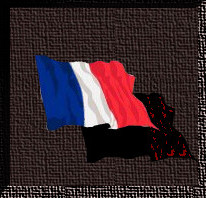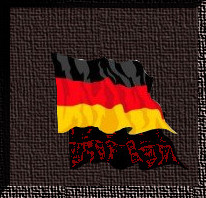 The Adoration of the Shepherds
The Adoration of the ShepherdsMaino
Fray Juan Bautista
1612 - Museo del Prado, Madrid
1612 - Museo del Prado, Madrid
The Adoration of the Shepherds is the work of a painter fully immersed in the art of Caravaggio. Maino appropriated not only Caravaggio's distinctive human types, seen especially in the angels and the shepherd in the right corner, but also his characteristic use of light and his love of intricate, studied compositions. Furthermore, Maino was able to fathom Caravaggio's dazzling surface effects and comprehend his profoundly human sense of religious feeling. In the most moving passage of the painting, St Joseph kneels beside the Christ Child and tenderly, almost reverently, kisses his wrist, subtly fusing feelings of paternal love and spiritual revelation. In this work, Maino reproduces the flamboyance of Caravaggio's early Roman style, exaggerating it by heightening the luster and brilliant colour of the exotic costumes, an effect that he possibly appropriated from the Dutch and Flemish "Caravaggisti", who were in Rome at the same time. Some aspects of the compositions derive from El Greco, whose works were so numerous in Toledo.
 L'adoration des
bergers
L'adoration des
bergersMaino
Fray Juan Bautista
1612 -
Musée du Prado, Madrid
L'Adoration des bergers est l'œuvre d'un peintre totalement immergé dans l'art du Caravage. Maino s'est approprié non seulement les types humains distinctifs du Caravage, vus en particulier dans les anges et le berger dans le coin droit, mais aussi son utilisation caractéristique de la lumière et son amour des compositions complexes et étudiées. De plus, Maino a pu sonder les effets de surface éblouissants du Caravage et comprendre son sens profondément humain du sentiment religieux. Dans le passage le plus émouvant du tableau, saint Joseph s'agenouille à côté de l'Enfant Jésus et embrasse tendrement, presque avec révérence, son poignet, fusionnant subtilement les sentiments d'amour paternel et de révélation spirituelle. Dans cette œuvre, Maino reproduit la flamboyance du style romain primitif du Caravage, en l'exagérant en rehaussant le lustre et la couleur brillante des costumes exotiques, un effet qu'il s'est peut-être approprié des "Caravagistes" hollandais et flamands, qui étaient à Rome en même temps temps. Certains aspects des compositions dérivent du Greco, dont les œuvres étaient si nombreuses à Tolède.
 La
Adoración de los Pastores
La
Adoración de los PastoresMaino
Fray Juan Bautista
1612 - Museo del Prado, Madrid
1612 - Museo del Prado, Madrid
La Adoración de los Pastores es obra de un pintor inmerso de lleno en el arte de Caravaggio. Maino se apropió no solo de los tipos humanos distintivos de Caravaggio, que se ven especialmente en los ángeles y el pastor en la esquina derecha, sino también de su uso característico de la luz y su amor por las composiciones intrincadas y estudiadas. Además, Maino pudo sondear los deslumbrantes efectos superficiales de Caravaggio y comprender su sentido profundamente humano del sentimiento religioso. En el pasaje más conmovedor del cuadro, San José se arrodilla junto al Niño Jesús y le besa la muñeca con ternura, casi con reverencia, fusionando sutilmente sentimientos de amor paterno y revelación espiritual. En esta obra, Maino reproduce la extravagancia del estilo romano temprano de Caravaggio, exagerándolo al realzar el lustre y el color brillante de los exóticos trajes, efecto que posiblemente se apropió de los holandeses y flamencos "Caravaggisti", que se encontraban en Roma al mismo tiempo. hora. Algunos aspectos de las composiciones derivan de El Greco, cuyas obras fueron tan numerosas en Toledo.
 Die Anbetung
der
Hirten
Die Anbetung
der
HirtenMaino
Fray Juan Bautista
1612 - Museo del Prado, Madrid
1612 - Museo del Prado, Madrid
Die Anbetung der Hirten ist das Werk eines Malers, der vollständig in die Kunst von Caravaggio eingetaucht ist. Maino machte sich nicht nur Caravaggios ausgeprägte Menschentypen zu eigen, die sich vor allem in den Engeln und dem Hirten in der rechten Ecke zeigten, sondern auch seinen charakteristischen Umgang mit Licht und seine Liebe zu komplizierten, einstudierten Kompositionen. Darüber hinaus vermochte Maino Caravaggios schillernde Oberflächenwirkungen zu ergründen und sein zutiefst menschliches religiöses Empfinden zu verstehen. In der bewegendsten Passage des Gemäldes kniet der heilige Joseph neben dem Christkind und küsst zärtlich, fast ehrfürchtig sein Handgelenk, wobei er auf subtile Weise Gefühle von väterlicher Liebe und spiritueller Offenbarung verschmilzt. Maino reproduziert in diesem Werk die Extravaganz von Caravaggios frührömischem Stil und übertreibt ihn, indem er den Glanz und die Farbbrillanz der exotischen Kostüme verstärkt, eine Wirkung, die er sich möglicherweise von den niederländischen und flämischen "Caravaggisti" angeeignet hat, die gleichzeitig in Rom waren Zeit. Einige Aspekte der Kompositionen stammen von El Greco, dessen Werke in Toledo so zahlreich waren.